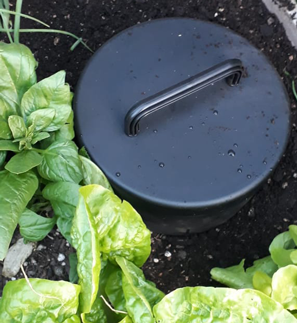
Recycle your organic kitchen waste straight into the garden with the Tui In-Ground Composter. Simply top up the composter with your organic waste for the worms to process into rich nutrients to feed your plants.
Simple to assemble and easy to use, the Tui In-Ground Composter can hold up to 1,000 worms! We've put together a guide to setting up in your garden.
Shopping list
- Tui In-Ground Composter
- Newspaper - make into strips
- Straw
- Leaf matter
- Compost
- Kitchen waste
- Optional: Composting (tiger) worms
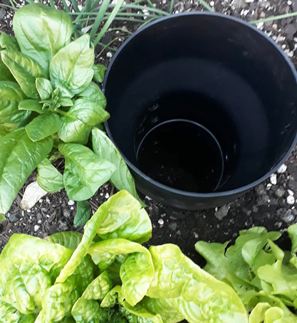
1. Position in your garden bed & bury into the soil leaving the top flared section exposed.

2. In the base, start with a bedding of pre-moistened strips of newspaper.
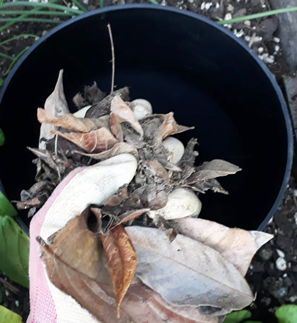
3. Add leaf matter.
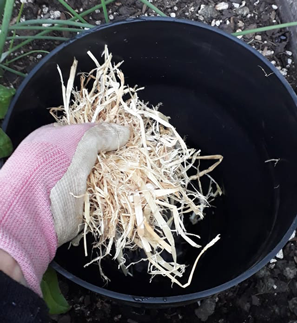
4. Add straw.

5. Add compost.
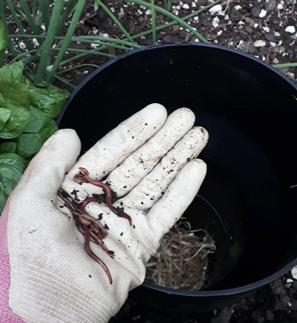
6. Optional: Add composting (tiger) worms. Worms from your garden will travel back and forth through the feeding holes, composting your waste and delivering nutrients directly back into the garden.
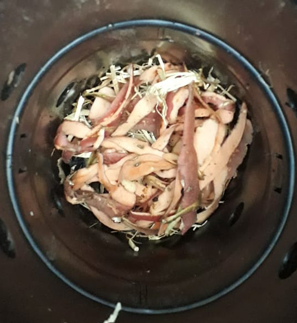
7. Add a handful of food scraps.

Avoid feeding meat, dairy products, bread, onions, citrus peel and tomatoes (acidic).
Post a comment
Setting up your Tui In-Ground Composter Comments
Do you sell tiger worms otherwise the only way to obtain them in Auckland is by buying a conventional worm farm...
Jo Fletcher
Hi Jo, thanks for getting in touch. Tui doesn't sell worms, however they are available online at WormsRUs and at some Bunnings stores - suggest phoning the store to check they have some in stock first.
Tui Team
Thank you, I will explore the options you suggest 🤞🏻 - Jo
Jo Fletcher
This is such a good type of worm farm, I would love to try it. Where can they be bought ?
Esme Pohatu
Hi Esme, thanks for getting in touch and for your feedback on our new Worm Tower. The Tui Worm Tower is available at Mitre 10 and garden centres. Happy gardening.
Tui Team
Excellent rose fert
lesley vince
Hi there, can the tower be moved to different spots in the garden or is it best left in one place?
Laura-Jane Booker
Hi Laura-Jane, thanks for your question. They are indeed movable and can be moved around the garden to improve soil in different areas as needed. To make it easier to dig up, a spade can be put down the side. Happy gardening!
Tui Team
Awesome thanks and is it rat proof?
Laura-Jane Booker
Hi Laura-Jane, yes it is. The Tower is placed 50cm down into the ground. Thanks!
Tui Team
Hi there, Could you advise of the size of the unit? Considering purchasing but cant decide on the number of units I need as I cant find the size of these online. Many thanks, Jennifer
Jennifer Carew
Hi Jennifer, thanks for your question. The Tui Worm Tower is approximately 52cm in length (which goes into the ground) and 22cm wide across the top where the lid sits. Hope that helps!
Tui Team
Hi, I'm looking for a way to dispose of dog poo, how would it affect a worm farm? Is it a possible option?
kita
Hi Nikita, yes dog poo can be added to the Tui Worm Tower. One of our team members adds dog poo to hers. We would recommend a mixture of dog poo and vege scraps. Happy gardening!
Tui Team
Damn good explanation - now need to win a tower!
Graeme Pullar
I would like to buy a worm tower, where are they sold please?
Jan
Hi Jan, you can purchase a Tui Worm Tower from your local Mitre 10 store once the shops re-open.
Tui Team
This sounds just what I have been looking for, something relatively small I have recently moved and now have a much smaller garden. I also now have a waste master and it seems such a shame to be putting all these nutrients down the drain instead of my garden like I used to.
Elaine Pepperell
Hi, is it necessary to buy worms or can you just let the worms in the veggie bed find their own way to the tower?
SV
Hi Sally, it is not necessary to buy worms to add to your worm tower, you can do this, but once you put food scraps into the tower the worms will migrate to the tower. It may take a few weeks, but they will find the food.
Lianne, Tui Team
This is so much easier than the free-standing worm farm and delivers nutrients very effectively. However, I have kept the original one going as well because I love the worm wee, which I use in the watering can to feed the flower garden
Kathy
Hi, how much area would one tower cover? Looking to get one (or a few) for a long veggie garden bed but I’m not sure how far the worms would travel out from the tower. Thanks!
Larissa
Hi Larissa, place each worm tower 1 metre to 1.5 metres apart. Each tower will need a hole dug approximately 50cm wide to fit the base of the worm tower into. The worms will migrate towards the worm tower as soon as you start putting food scraps into the worm tower, not the other way, .
Lianne
My husband and I recently moved to tiny unit with a minute vege lot and small front garden with shrubs. I am desperate to have some form of composting, must not be smelly. I have lots of fruit and vege scraps, hate binning them. What do you suggest, a tower or a worm farm? Easiest to manage?
Eirene
Hi Eirene, it largely depends what suits your lifestyle, both are a great way of using vegetable scraps. A worm farm shouldn't smell if it is all in balance, the worms need feeding every 2-3 days and over time produce nutrient rich humus for the garden as well as worm tea which can be diluted and used as a liquid fertiliser. The worm tower is definitely easier to manage and is feed and forget, the worms do the rest of the work. The worm tower does need a large hole dug to get it into the garden, about 50cm wide and 30-50cm deep to start with, so if space is an issue it may be hard to find a place in the garden for it. The worm tower does not smell or attract flies, feed the worms can be fed every 4-5 days and once in place with food worms will migrate towards the worm tower, there is no need to add worms, as you do with a worm farm.
Lianne
I think it needs to be made clear that you do NOT have to buy composting worms, the garden worms are fine. The cheapest still effective method is to just bury the scraps and the worms in the garden are soon drawn. The scraps just disappear. It needs to be easy and cost effective to reach the broader population.
Victoria
Hi Victoria, you are correct, the worms will migrate towards the food and there are small holes in the sides of the tower for this to happen. Earthworms and composting worms are different. Composting worms are red, live in clumps near the surface and are voracious feeders, especially of kitchen waste. Earthworms are solitary, feed on organic matter that they drag down into the soil to aerate the soil and improve drainage. Keep an eye out for red composting worms in your worm tower and garden compost.
Lianne
How many worms do you suggest per worm tower? Thanks
Sophie
Hi Sophie, the instructions say a worm tower holds up to 1,000 worms. I have two worm towers in my garden and didn’t put any worms into either, but just started putting food into the tower, the worms migrated from the soil to the food source, there were worms in there in no time. If you do want to add worms, start with a handful from the compost heap, they multiply and migrate to the food, and will find their own population balance.
Lianne
Hi. Will both tiger worms and earthworms live/work together in this tower?
Sandra
Hi Sandra, earthworms and tiger/composting worms work differently but can live together. Earthworms are solitary, large, with long segmented bodies. They burrow down into the soil dragging organic matter with them, creating small tunnels which help aerate the soil creating air pore space for plant roots and so improving drainage and soil structure. Tiger/composting worms are small, red and wriggly, live in clumps near the surface of the soil feeding on kitchen scraps and organic plant material, the worms produce nutrient rich humus which is used to to enrich garden soil. Earthworms and compost worms can live together, earthworms will feed on the nutrient rich humus produced by compost worms.
Lianne
Bees to pollinate, compost to nourish and worms to aerate the soil, the three essentials to start a healthy, successful garden.
Anna Allan